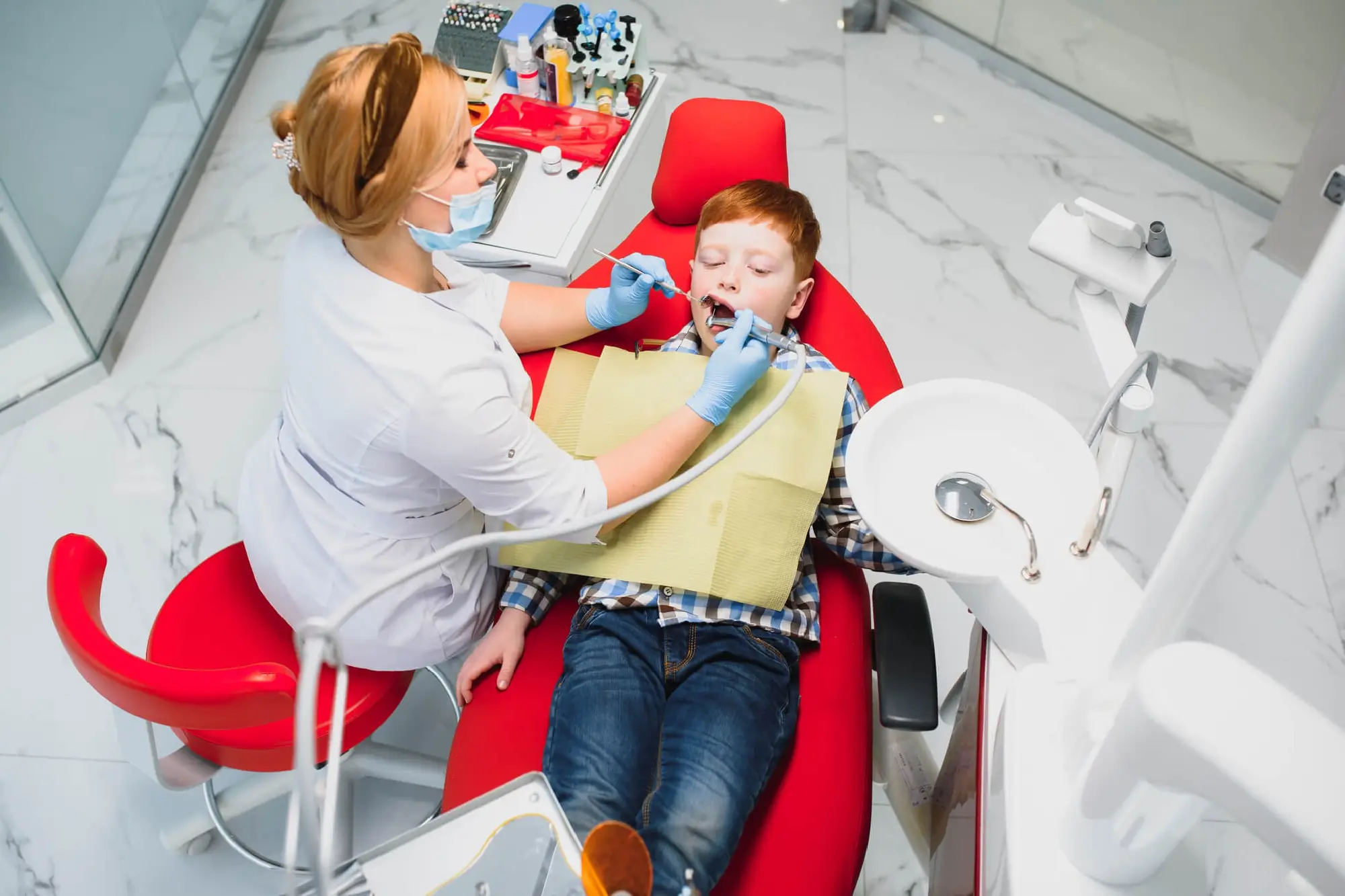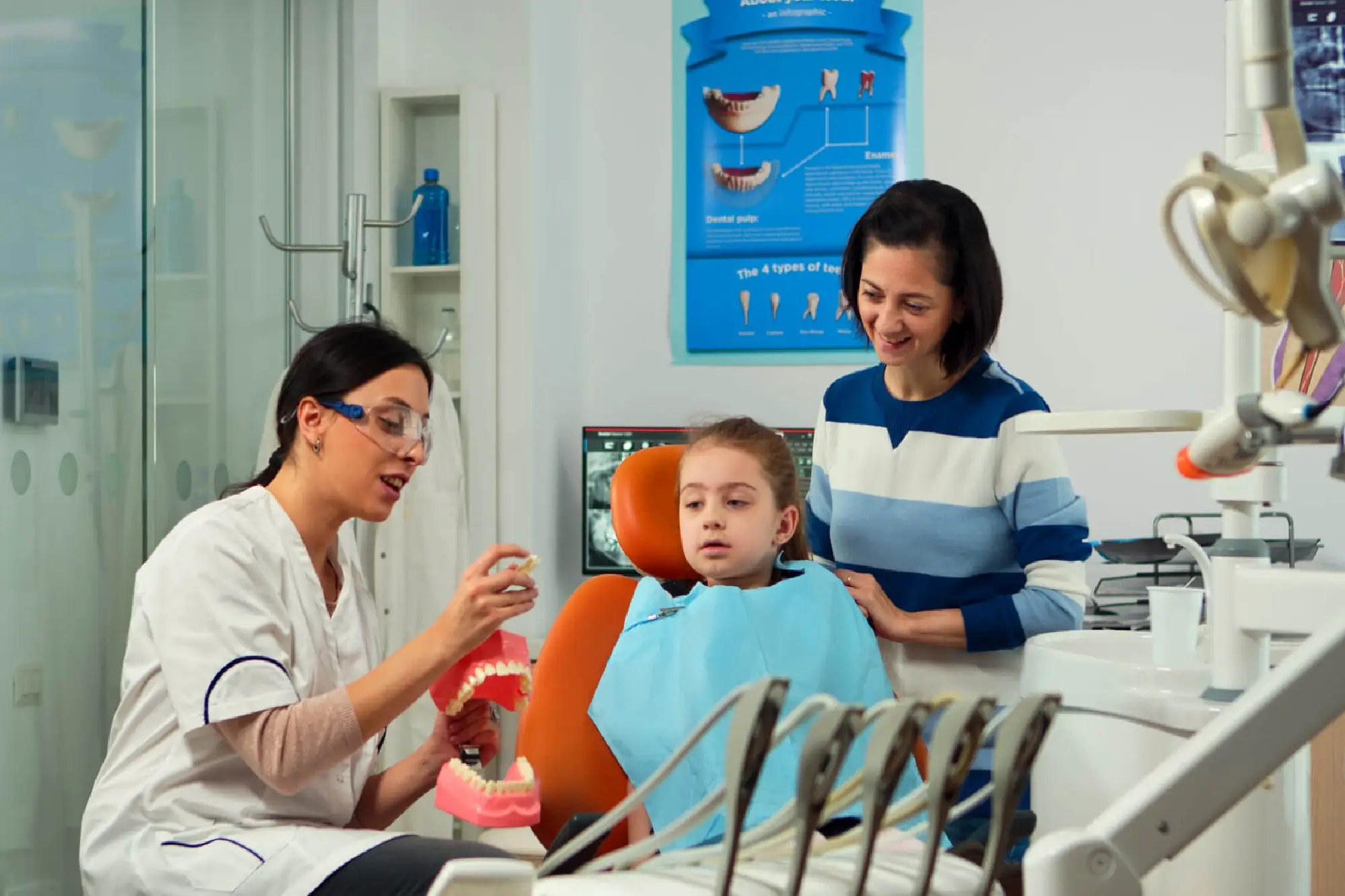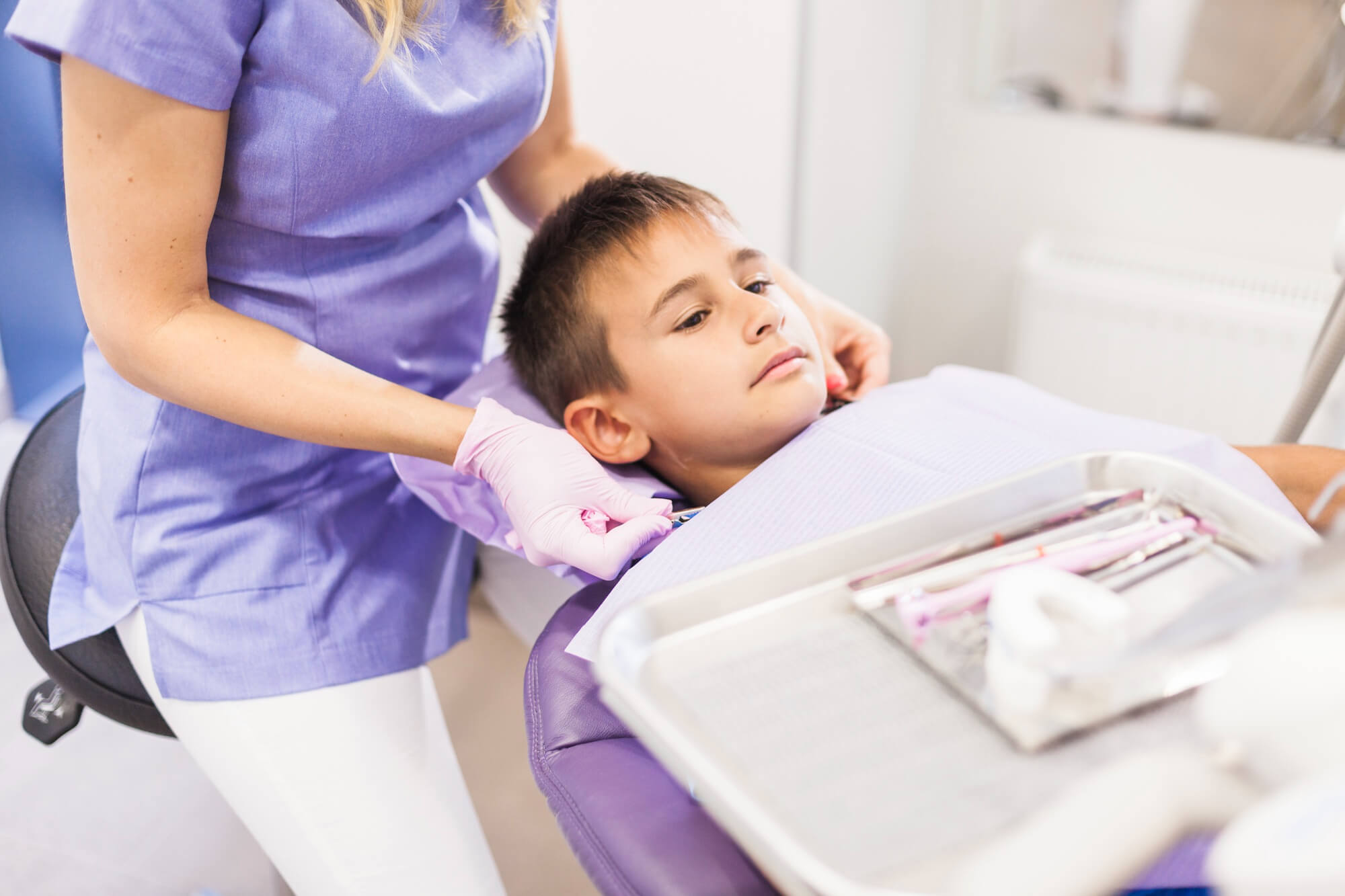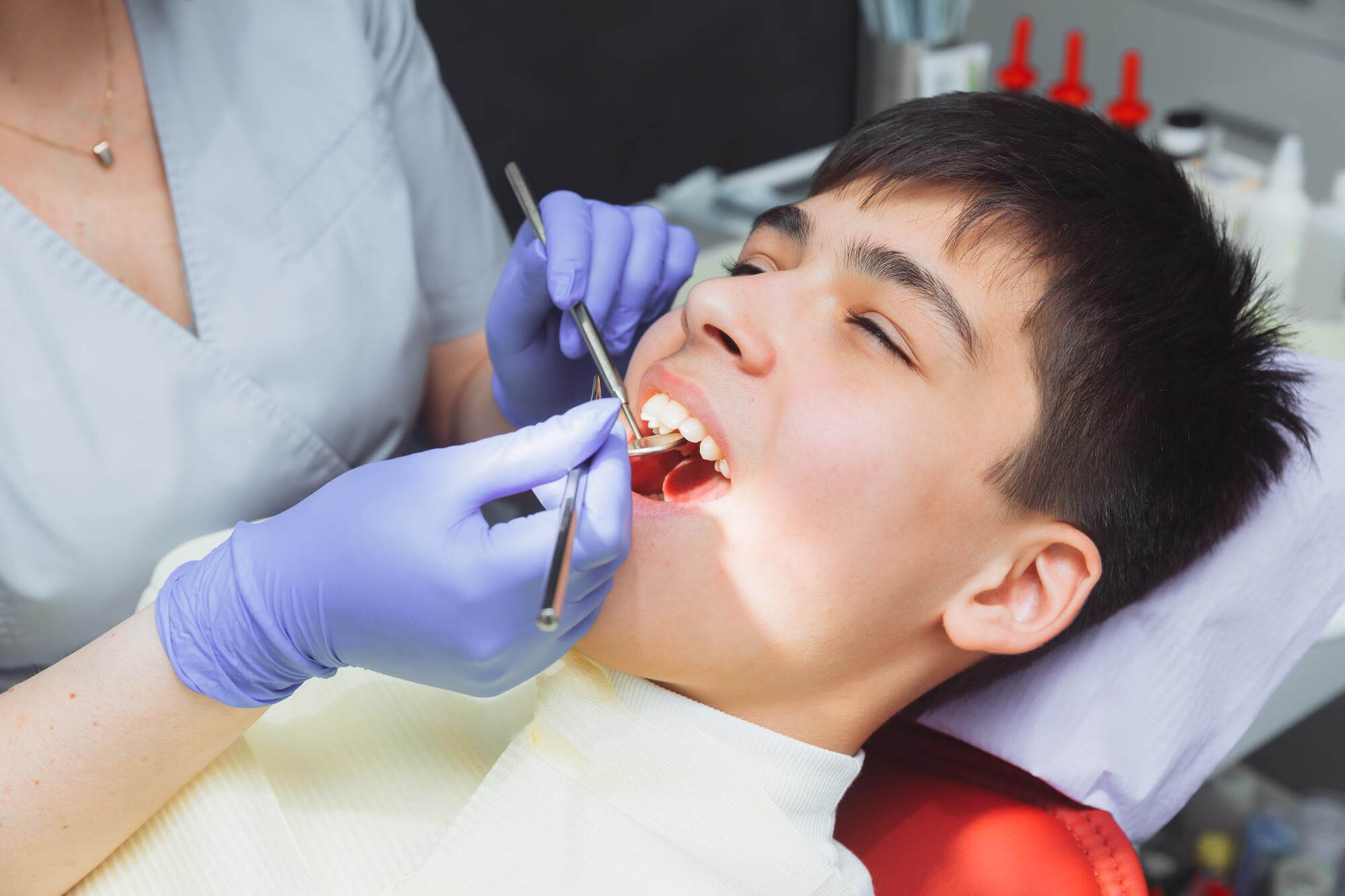pediatric dentistry is a vital branch of dentistry that provides comprehensive dental care for children. Pediatric dentists are experts in addressing the unique dental needs of children, and they are dedicated to creating a positive dental experience for your child. By providing preventive care, handling emergencies, and educating parents, pediatric dentists help ensure a lifetime of healthy teeth and gums for your child. So, if you want to ensure your child’s dental health, don’t hesitate to schedule an appointment with a pediatric dentist today!
One of the most crucial aspects of pediatric dentistry is preventive care. Pediatric dentists work to prevent dental problems before they occur, by providing guidance on proper oral hygiene, diet, and nutrition. They also offer fluoride treatments and dental sealants to help protect your child’s teeth from decay.
A pulpotomy in pediatric dentistry is a procedure that involves the partial removal of the infected or decayed pulp tissue from the crown (visible portion) of a primary tooth. The aim is to remove the affected pulp tissue while preserving the healthy pulp in the root portion of the tooth. After the infected pulp is removed, a medication is placed on the remaining pulp tissue to disinfect and promote healing. A protective material, such as a stainless-steel crown or a filling, is then placed over the tooth to restore its shape, function, and protect it from further decay.
Pulpotomy is often recommended when the decay or infection in the primary tooth has not reached the pulp in the roots, and there is a chance for the tooth to heal and continue its normal growth until it naturally falls out.
A pulpectomy in pediatric dentistry is a procedure that involves the complete removal of the infected or damaged pulp tissue from both the crown and roots of a primary tooth. It is typically performed when the decay or infection has spread extensively throughout the tooth, including the pulp in the roots. The process is similar to root canal treatment in adults.
During a pulpectomy, the dentist removes the entire pulp from the tooth, cleans and shapes the root canals, and fills them with a biocompatible material called gutta-percha. Afterward, a stainless-steel crown or filling is placed on the tooth to restore its function and protect it.
Pulpectomy is often recommended when the infection or decay is severe, and there is little chance for the tooth to heal on its own. By removing the infected pulp, the procedure helps alleviate pain, prevent the spread of infection, and preserve the tooth until it naturally falls out and makes way for the permanent tooth.
It’s important to note that both pulpotomy and pulpectomy in pediatric dentistry are performed to save the affected primary teeth whenever possible. Preserving primary teeth is essential for proper speech development, chewing function, maintaining space for permanent teeth, and preventing potential orthodontic issues.
In pediatric dentistry, an oral comprehensive exam is a thorough evaluation of a child’s oral health. It includes a visual examination of the teeth, gums, and surrounding tissues, checking for signs of decay, infection, or abnormalities. The dentist may also evaluate the child’s bite, jaw development, and oral habits. X-rays may be taken to assess tooth and bone development. The exam may include a cleaning and fluoride treatment. The dentist will discuss oral hygiene practices, diet, and preventive measures such as sealants. It is an opportunity to address any concerns, provide education, and establish a foundation for the child’s lifelong oral health.
Teeth cleaning, also known as dental prophylaxis, is a procedure performed by a dental hygienist to remove plaque, tartar, and stains from the teeth. In pediatric dentistry, the cleaning process is gentle and tailored to a child’s needs. The hygienist may use a small, soft brush or a ultrasonic scaler to clean the teeth. They will carefully clean each tooth surface, including hard-to-reach areas, such as between teeth and along the gumline. Afterward, the teeth are polished using a special paste to give them a smooth and clean appearance. Teeth cleaning helps prevent tooth decay and gum disease, and it is usually followed by oral hygiene instructions specific to the child’s age and dental health.
Fluoride treatment involves the application of fluoride to the teeth to strengthen the tooth enamel and help prevent tooth decay. Fluoride is a mineral that can be applied as a gel, foam, or varnish. The dentist or dental hygienist will carefully apply the fluoride to the teeth using a brush, swab, or tray. The treatment is quick and painless. After application, the child will be asked to avoid eating or drinking for a short period to allow the fluoride to be fully absorbed by the teeth. Fluoride treatment can be especially beneficial for children as it helps protect their developing teeth from cavities and promotes stronger enamel.
Both teeth cleaning and fluoride treatment are important preventive measures in pediatric dentistry. They complement daily brushing and flossing routines and regular dental check-ups, forming a comprehensive approach to maintaining optimal oral health in children. It’s essential for parents to work closely with the dental team to ensure their child receives the appropriate dental care and guidance for a healthy smile.
In pediatric dentistry, fillings are used to treat cavities and restore damaged teeth in children. The process involves examination, anesthesia for comfort, removal of decay, and placement of appropriate filling material such as tooth-colored composite resin or dental amalgam. The filling is shaped, bonded, and cured to restore the natural contours of the tooth. Bite adjustment and polishing ensure proper function and aesthetics. The procedure is performed in a child-friendly environment with techniques to alleviate anxiety. Regular check-ups and good oral hygiene practices are essential for maintaining the longevity and health of the fillings, promoting optimal oral health in children.
Stainless steel crowns are the most used crowns in pediatric dentistry. They are durable, prefabricated crowns that can be easily placed over a prepared tooth. SSCs are strong and can withstand the forces of chewing, making them suitable for restoring extensively decayed or damaged teeth. They provide excellent protection and help maintain the tooth’s function and space until it naturally falls out. Stainless steel crowns are cost-effective and require minimal chairside time for placement.
Tooth-colored crowns, also known as esthetic crowns, are made from materials such as zirconia or resin composite. These crowns are more aesthetically pleasing as they closely match the natural tooth color, making them a preferred choice for front teeth restorations in children. They offer durability and strength while providing a more natural appearance. Tooth-colored crowns are often used when there is a need for both functional and cosmetic restoration.
Pre-veneered stainless-steel crowns are similar to stainless steel crowns but come with a layer of tooth-colored resin composite already bonded to the visible surface. This provides improved aesthetics while maintaining the strength and durability of stainless steel. They are suitable for restoring front and back teeth, offering a good combination of esthetics and functionality.
Dental sealants are thin, plastic coatings that are applied to the pits and grooves of the back teeth, where cavities are more likely to develop. The process is quick, painless, and non-invasive. The tooth surface is thoroughly cleaned and dried, and then an acidic solution or gel is applied to roughen the surface slightly, allowing the sealant to adhere better. The tooth is rinsed and dried again, and the sealant material is painted onto the tooth, where it bonds and hardens with the help of a curing light.
The purpose of dental sealants is to create a barrier on the tooth surface, preventing food particles, bacteria, and plaque from settling into the deep grooves and crevices. By sealing off these vulnerable areas, sealants reduce the risk of cavities and tooth decay. Children’s newly erupted permanent teeth are particularly susceptible to cavities, and sealants provide an extra layer of protection during this critical time.
Dental sealants can last for several years with proper care and maintenance. However, they need to be regularly checked during routine dental visits to ensure they remain intact and effective. If a sealant becomes damaged or worn, it can be repaired or replaced as needed.
Sealants are a non-invasive preventive measure that requires no drilling or removal of tooth structure. Compared to the cost of treating cavities, sealants are a cost-effective approach to preventing tooth decay and the need for more extensive dental work in the future.
By reducing the risk of cavities, sealants contribute to better oral health in children. They help preserve the natural tooth structure, maintain proper chewing function, and avoid the discomfort and potential complications associated with tooth decay.

Lorem ipsum dolor sit amet, consectetur adipiscing elit.

Lorem ipsum dolor sit amet, consectetur adipiscing elit.

Lorem ipsum dolor sit amet, consectetur adipiscing elit.

Lorem ipsum dolor sit amet, consectetur adipiscing elit.

Lorem ipsum dolor sit amet, consectetur adipiscing elit.

Lorem ipsum dolor sit amet, consectetur adipiscing elit.
Lorem ipsum dolor sit amet, consectetur adipiscing elit.
Lorem ipsum dolor sit amet, consectetur adipiscing elit.
Lorem ipsum dolor sit amet, consectetur adipiscing elit.
Lorem ipsum dolor sit amet, consectetur adipiscing elit.
The American Academy of Pediatric Dentistry recommends that children should visit a pediatric dentist by the age of one or within six months after the first tooth appears.
During the first visit, the pediatric dentist will conduct a comprehensive oral examination to assess your child’s dental health. They will also provide guidance on proper oral hygiene, diet, and nutrition, and answer any questions you may have.
Children should see a pediatric dentist every six months for routine checkups and cleanings. However, the frequency of visits may vary depending on your child’s dental health needs.
Parents can help prepare their child for their dental visit by talking to them about what to expect and the importance of dental care. You can also read books or watch videos about dental visits to help your child feel more comfortable.
Pediatric dentists are trained to work with children and create a child-friendly environment that helps children feel more comfortable and relaxed. They may also offer sedation or other techniques to help ease anxiety and fear.
Parents play a crucial role in their child’s dental care by promoting good oral hygiene habits, providing a healthy diet, and bringing their child to the dentist for regular checkups and cleanings.
If your child experiences a dental emergency, such as a knocked-out tooth or severe toothache, contact your pediatric dentist immediately. They can provide prompt and effective treatment to help save your child’s teeth.
To prevent tooth decay in your child, ensure they brush their teeth twice a day with fluoride toothpaste, limit sugary and acidic foods and drinks, and provide a balanced diet with plenty of fruits and vegetables. You can also ask your pediatric dentist about fluoride treatments and dental sealants.
Dental sealants are a protective coating applied to the chewing surfaces of molars and premolars. They help prevent tooth decay by sealing off the deep grooves and crevices where bacteria and food particles can collect.
Dental x-rays are safe for children when proper precautions are taken. Pediatric dentists use digital x-rays that emit very low levels of radiation, and they also use protective aprons and shields to minimize exposure. The benefits of dental x-rays in diagnosing and treating dental problems outweigh the minimal risks.